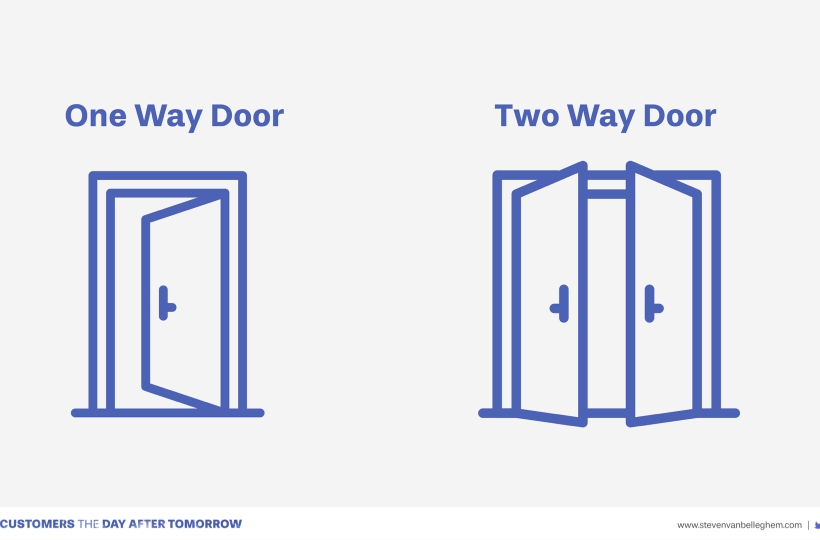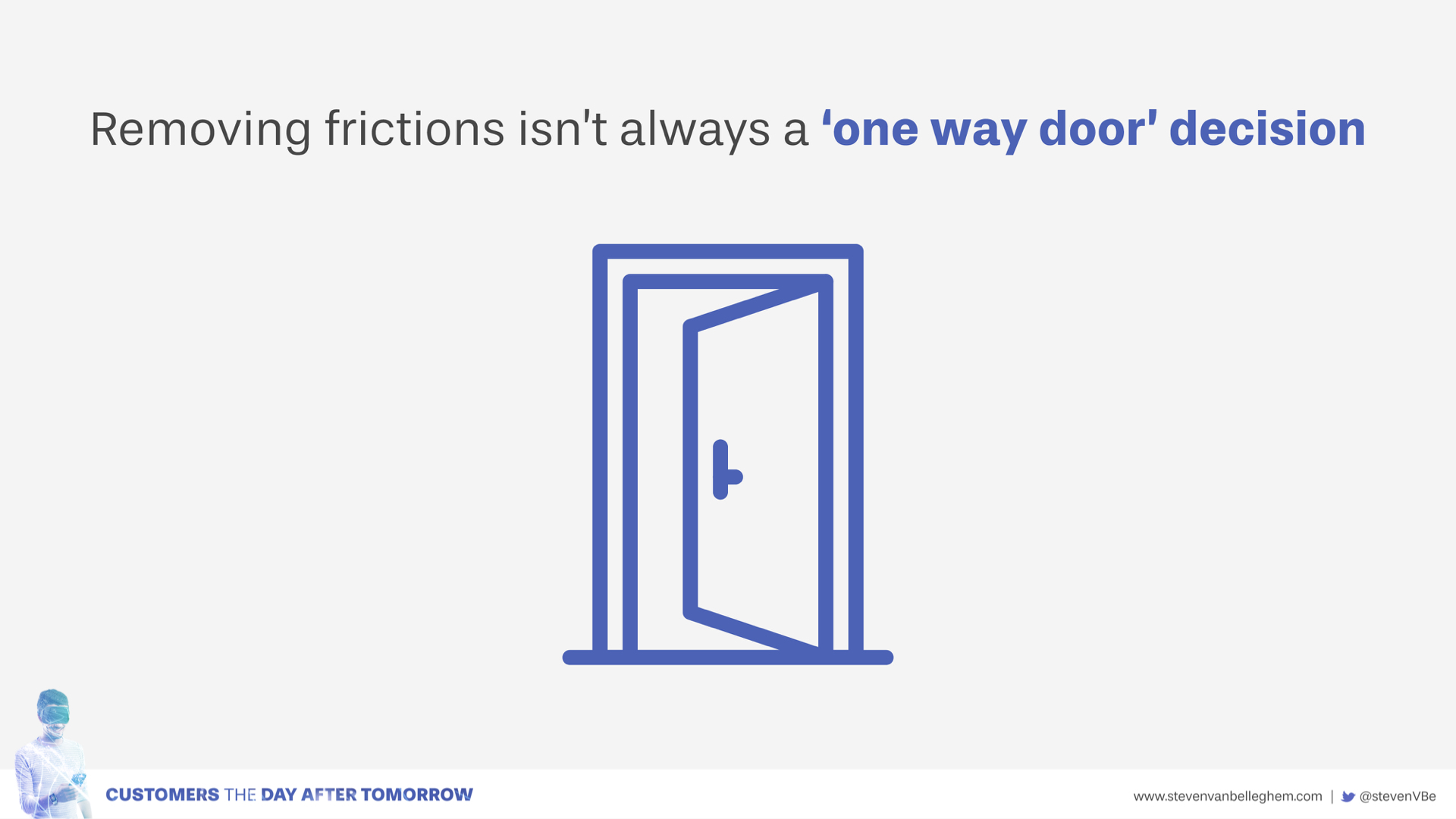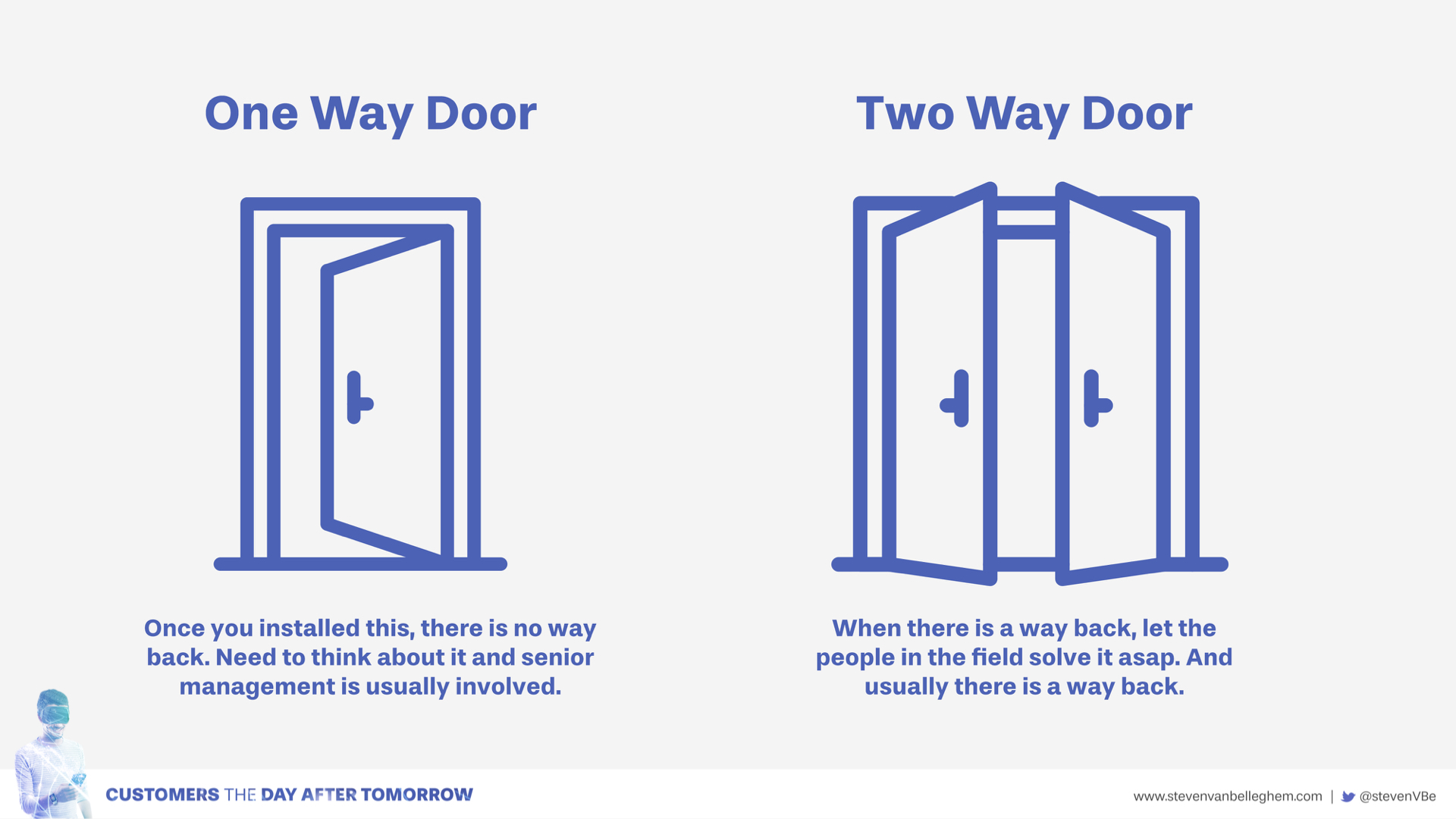Customer Experience Innovation with the One-Way and Two-Way Door rule

Two-way door innovation
About 99% of all customer improvements function like two-way doors. This means that the impact of a possible failure of this type of small-scale experiments will always be so low that you’ll be able to retrace your footsteps – and go back through the door – without losing face, heaps of money and – worst of all – customers. You can pull the plug on them anytime and no one will be the wiser. No, scratch that, you will be wiser, because of all the learnings that come from a failed experiment.
I love this vision, because it’s a fresh way of looking at an experiment, by taking away most of our risks and fears in the matter. It helps make innovation ‘safe’. So the next time that someone from your team proposes something daring that your gut really likes, but your ‘rational’ brain is afraid of, ask yourself this question: “if we test this on a comfortable scale, with a limited amount of customers, will I be able to go back if the result is not what we’d hoped for?” “Will they so furious that they’ll desert our brand?”. If the answer is “No” – and trust me, most of the time it will be – you know you’ll just have to try it. You can always go backwards through that same door you came in through.
One-way door innovation
But then there’s the remaining 1% of customer improvements: the ones that will deliver massive value when then do succeed but these tend to be a lot riskier, because you will not be able to turn your decision around if they fail, without feeling an extensive negative impact. These changes always ought to happen in consultation with the senior leadership and the rest of the involved team. These are the types of customer transformations that you have to carefully consider before you try them out, because they’re the ones that can turn your image and your philosophy on their head. And that can be a good thing obviously. If it works.
Ralf Kleber offered a perfect example in the matter: free delivery. You cannot offer your customers free delivery and then decide to charge them again after a few months because the benefits that you hoped for did not fall through. This is exactly the type of thing that will enrage consumers, costing you massive loss of face on social media and hordes of customers refusing to return to your brand. Now, I’m not saying that you should never go through with these 1% one-way door innovations. Far from it. For your customers, and for you. But think these innovations through and through before you launch them.
The beautiful thing is that most of the customer improvements will fall into the first, the two-way door category. And I believe that the feeling of safety that comes with this mental trick, will help you and your team a lot.

